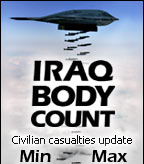Business Writing / Project Management
Selected Writings /
Music Reviews
Reformed Serial Killer Seeking
Roommates
About me
 |
Searchlight from the Old Order
A review of "Search for the New Land," by Lee Morgan
The album is an all-star event: Herbie Hancock, Wayne Shorter, Reggie
Workman (a bassist for John Coltrane), Grant Green all had strong solo
careers of their own. Billy Higgins, the drummer on the album, is a great
choice, not just because he had drummed for three quarters of all Blue
Note releases in the 60's, but because of his experience playing with
Ornette Coleman's original free jazz band. More on the free jazz influence
later.
One possible reason all these stars appeared on this album at this point in Lee Morgan's career, is that Morgan had just released the Sidewinder the year before. The album, and it's cutting and catchy title track, had hit the Billboard pop charts, a rare feat in an era when jazz had been replaced by rock as the popular dance music of the day.
The thing about Lee Morgan albums, is that they brought the dance sensibility back to jazz. This isn't swing music, but it does make you swing your head.
Against the backdrop of success with Sidewinder, Lee Morgan could have released a copycat album of his famous boogaloo cutters. (And it should be noted that he did do that, later on in the sixties.) But right now, in 1964, at the height of his popularity, instead of recording one of those copycat albums, he recorded a deeply sensitive and challenging set of music.
The focus of the album, once again, is on the title track. Search for the New Land is nearly sixteen minutes long, and is so fascinating to me because it literally switches between the two major jazz modalities of the day: hard-bod and free jazz.
Hard bop is the kind of jazz that most people think of when they hear the word jazz. Picture of group of five or six musicians, playing a melody, each soloing, and then playing the melody again. The forward-driving rhythm and full sound of hard-bod make you want to bop your head.
Free jazz, on the other hand throws out the rules and constraints. In place of well-stated melodies, the groups (sometimes numbering 2-3 times as many musicians) jump right into the soloing or state a simple riff. The solos don't always happen one at a time. And most importantly, the rhythm section (piano, bass, and drums) do not play a straightforward chord progression you can bop your head to. For the listener, free jazz is more challenging, often more jarring and dissonant. But without the bounds of hard-bop, free jazz often reached greater emotional depths. And the drummer of one of the pioneering free jazz bands was Billy Higgins.
Search for the New Land switches a handful of times between a free statement of the melody, and a hard-bod rhythm. The extended length of the piece is also a change for Lee, whose pieces typically fit in the 5-10 minute range. Over and over the band returns to the free cadenza of guitar chords, cymbals, and piano. Is it a beginning? And ending? Lee Morgan challenges the form that brought him fame! The solos here, particularly Herbie Hancock's, reflect a emotional gravity that Lee didn't show us on other recordings, favoring instead the slick virtuosity and funk of this musicians.
The other tunes on the album fit in better with the Lee we know from Sidewinder, Cornbread, Caramba, and other releases.